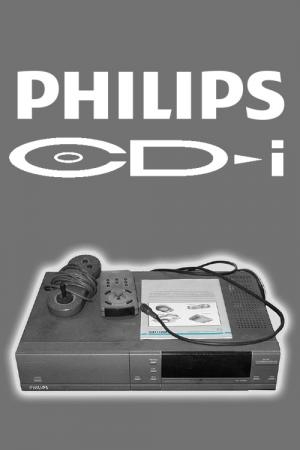
Philips CD-i
Philips CD-i Specifications
| Manufacturer: | Philips |
| Developer: | Philips |
| CPU: | Philips SCC68070 |
| Memory: | 1 MB of main RAM |
| Graphics: | SCC66470, later MCD 212 |
| Sound: | MCD 221 16-bit stereo sound |
| Medium: | Disc |
| Display: | 384×280 to 768×560 |
| Controllers: | 1 |
The Philips CD-i (Compact Disc Interactive) is an interactive multimedia CD player developed and marketed by Royal Philips Electronics N.V. This category of device was created to provide more functionality than an audio CD player or game console, but at a lower price than a personal computer with CD-ROM drive at the time. The cost savings were due to the lack of a hard drive, floppy drive, keyboard, mouse, monitor (a standard television was used), and less operating system software. In addition to games, educational and multimedia reference titles were produced, such as interactive encyclopedias, museum tours, etc. before public Internet access was widespread. Competitors included the Tandy VIS and Commodore CDTV. CD-i also refers to the multimedia Compact Disc standard used by the CD-i console, also known as Green Book, which was developed by Philips and Sony (not to be confused with MMCD, the pre-DVD format also co-developed by Philips and Sony). Work on the CD-i began in 1984 and it was first publicly announced in 1986.
CD-i media physically have the same dimensions as CD, but with up to 744 MB of digital data storage, including up to 72 minutes of full motion video. CD-i players were usually standalone boxes that connect to a standard television; some less common setups included integrated CD-i television sets and expansion modules for personal computers. Most players were created by Philips; the format was licensed by Philips and Microware for use by other manufacturers, notably Sony who released professional CD-i players under the "Intelligent Discman" brand. Unlike CD-ROM drives, CD-i players are complete computer systems centered around dedicated Motorola 68000-based microprocessors and its own operating system called CD-RTOS, which is an acronym for "Compact Disc – Real Time Operating System".
Media released on the format included video games and "edutainment" and multimedia reference titles, such as interactive encyclopedias and museum tours – which were popular before public Internet access was widespread – as well as business software. Philips's CD-i system also implemented Internet features, including subscriptions, web browsing, downloading, e-mail, and online play. Philips's aim with its players was to introduce interactive multimedia content for the general public by combining features of a CD player and game console, but at a lower price than a personal computer with a CD-ROM drive.
Authoring kits for the format were released first in 1988, and the first player aimed for home consumers, Philips's CDI 910/205, at the end of 1991, initially priced around US$1,000 (equivalent to $2,149 in 2022), and capable of playing interactive CD-i discs, Audio CDs, CD+G (CD+Graphics), Photo CDs and Video CDs (VCDs), though the latter required an optional "Digital Video Card" to provide MPEG-1 decoding. Initially marketed to consumers as "home entertainment systems", and in later years as a "gaming platform", CD-i did not manage to find enough success in the market, and was mostly abandoned by Philips in 1996. The format continued to be supported for licensees for a few more years after.
Development of the "Compact Disc-Interactive" format began in 1984 (two years after the launch of Compact Disc) and it was first publicly announced by Philips and Sony – two of the largest electronics companies of the time – at Microsoft's CD-ROM Conference in Seattle in March 1986. Microsoft's CEO Bill Gates had no idea beforehand that the format was under development. The Green Book, formally known as the "CD-i Full Functional Specification", defined the format for interactive, multimedia compact discs designed for CD-i players. The Green Book specification also defines a whole hardware set built around the Motorola 68000 microprocessor family, and an operating system called CD-RTOS based on OS-9, a product of Microware. The standard was originally not freely available and had to be licensed from Philips. However, the 1994 version of the standard was eventually made available free by Philips.
CD-i discs conform to the Red Book specification of audio CDs (CD-DA). Tracks on a CD-i's program area can be CD-DA tracks or CD-i tracks, but the first track must always be a CD-i track, and all CD-i tracks must be grouped together at the beginning of the area. CD-i tracks are structured according to the CD-ROM XA specification (using either Mode 2 Form 1 or Mode 2 Form 2 modes), and have different classes depending on their contents ("data", "video", "audio", "empty" and "message"). "Message" sectors contain audio data to warn users of CD players that the track they are trying to listen to is a CD-i track and not a CD-DA track. The CD-i specification also specifies a file system similar to (but not compatible with) ISO 9660 to be used on CD-i tracks, as well as certain specific files that are required to be present in a CD-i compatible disc. Compared to the Yellow Book (specification for CD-ROM), the Green Book CD-i standard solves synchronisation problems by interleaving audio and video information on a single track.
The format quickly gained interest from large manufacturers, and received backing from many particularly Matsushita. Although a joint effort, Philips eventually took over the majority of CD-i development at the expense of Sony. Philips invested many millions in developing titles and players based on the CD-i specification. Initially branded "CD-I", the name was changed in 1991 to "CD-i" with a lowercase i.
The CD-i Ready format is a type of bridge format, also designed by Philips, that defines discs compatible with CD Digital audio players and CD-i players. This format puts CD-i software and data into the pregap of Track 1.
The CD-i Bridge format, defined in Philips' White Book, is a transitional format allowing bridge discs to be played both on CD-ROM drives and on CD-i players.
The CD-i Digital Video format was launched in 1993 containing movies that could be played on CD-i players with a Digital Video Cartridge add-on. The format was incompatible with Video CD (VCD), although a CD-i unit with the DVC could play both formats. Only about 20 movies were released on the format and it was stopped in 1994 in favor of VCD.
Latest on Philips CD-i
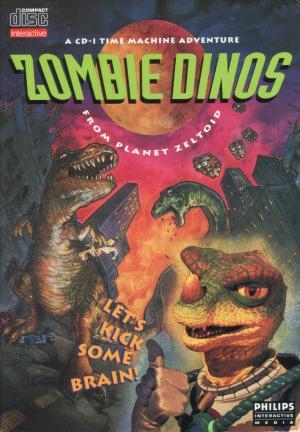
Zombie Dinos From Planet Zeltoid
Innocent dinosaurs have become mindless zombies, controlled by the evil Harry the Harrier and his alien Brain Blobs. But all is not lost. Wise-crackin...
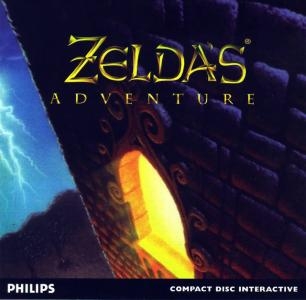
Zelda's Adventure
As the brave warrior, Princess Zelda, it's your mission to thwart the enemy, Gannon, who has captured Link and taken over Tolemac. On the way to freei...
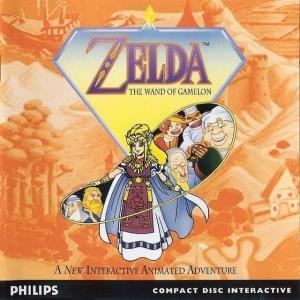
Zelda: The Wand of Gamelon
When King Harkinian vanishes on a mission to save Gamelon, Link takes off to rescue him. But soon Link is also missing, and Zelda must free them both ...
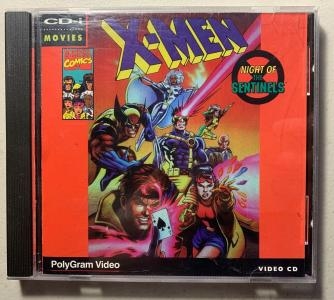
X-Men Night of the Sentinels
Philips CD-i Movies

Voyeur II (2 DISC UNRELEASED CDI GAME)
Voyeur 2 for the CDI, Previously unreleased sequel now available as a reproduction. This contains two discs with over 80 minutes of FULL MOTION VID...
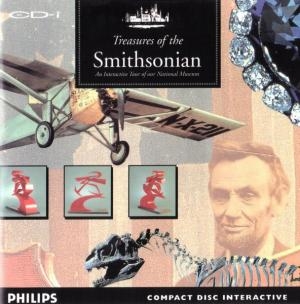
Treasures of the Smithsonian
Explore the highlights of a dozen museums in this unique, interactive compact disc! From the Air and Space Museum to the National Zoo, treasures range...

Time Life Astrology
Discover the fascinating history and principles of Astrology through a captivating presentation of artefacts, drawings and paintings from ancient Sume...

Tim et Ted à l'aéroport
Unlike the first title in the series (Tim & Beer in het Ziekenhuis) which didn't feature interaction (beyond choosing which of the two characters to f...
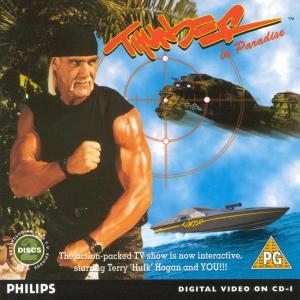
Thunder in Paradise
Here's your shot at Paradise, bro. You're in the middle of an action-packed adventure with your cohorts Spence (Terry "Hulk" Hogan) and Bru (Chris Lem...
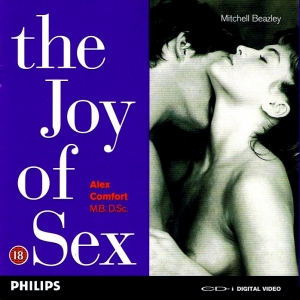
The Joy of Sex
Welcome to the Joy of Sex on Interactive Compact Disc. You will discover a wise, entertaining, uninhibited guide to lovemaking, containing sparking co...